Apple has faced profound challenges in the past from powerfully entrenched adversaries that once looked like they might derail the company's advancement, including Microsoft, Nokia, Google, Motorola, and Samsung. But today, with no real competitors standing in its way, will Apple's premium-priced trajectory get knocked out of alignment by a recession in China and global aftershocks? Here's a look at Apple's future informed by its recent past.
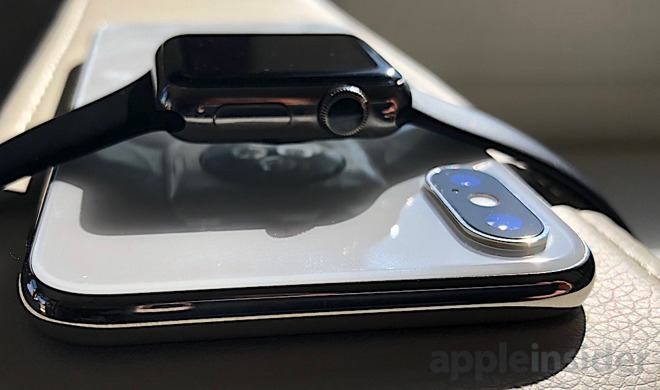
How will Apple's affordable luxury survive a global recession?
The modern history of Apple has weathered two previous recessions: one in the early 2000s following the Dotcom Bust, and then the Great Recession of the late 2000s that hit after the 2007 Financial Crisis. Note that both of these happened to coincide with the emergence of major new products that fundamentally changed Apple's core: first iPod and then iPhone.
In 2001, Apple was just beginning to recover from its 1990s near-death experience thanks to a series of decisive moves by Steve Jobs —including the slashing of unproductive research and the simplification of the company's product strategy. Yet as Apple rebuilt itself with solid new hits like the consumer iMac and workhorse PowerMac G4, it also launched its first notable mistake in the expensive, high-end, form-over-function PowerMac G4 Cube in 2000.
The G4 Cube was beautiful and featured some impressive concepts, but was beset by poor timing. It had been premium-priced to cater to the lavish-spending Dotcom market that began to implode just as the new machine became available. It only lasted one year as a commercial product. It now sits in various museums including New York's Museum of Modern Art, and in a few AppleInsider staffers' collections
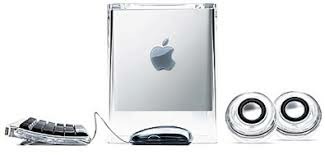
The PowerMac G4 Cube
It's tempting to suggest that Apple's current lineup of high-end iPhones, MacBook Pros and other premium hardware sit in a similarly precarious position as the economy begins to look uncertain globally—particularly in China, where big-ticket spending has scaled back dramatically. There's an incessant media narrative continuously backed by populist head nodding that claims Apple's prices are just so high now that nobody can afford to buy them, along the lines of the quote attributed to Yogi Berra that "nobody goes there anymore. It's too crowded."
Pundits, columnists, and even many analysts keep talking about Apple's premium pricing as a problem, and seem to think they have discovered pure gold in arriving at the conclusion that rivals are offering competitive hardware at—get this—cheaper prices than Apple. The reality is that neither of those things is new for Apple at all.
In reality, the G4 Cube wasn't abruptly discontinued because the public suddenly realized that HP, Dell, and various generic PC makers were selling computers for less. It was largely that the new Cube was trying too hard to be museum-worthy and simply wasn't very good at being a powerful Mac, or as a plug and play consumer hit like iMac, and wasn't really doing anything usefully new.
The pricing of the fancy G4 Cube certainly didn't help its overall popularity, but a larger problem was its rather impractical desktop form factor just as mobility was growing increasingly important.
Apple continued to cope with the Dotcom Bust and economic recession while selling other premium-priced PowerMacs. It also introduced the fancy new Titanium PowerBook G4, a machine that was just as much of a premium-priced showboat as the G4 Cube at a time when tons of cheap PC notebooks were available elsewhere.
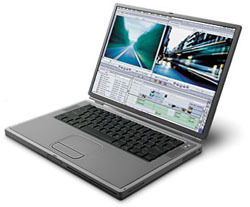
Titanium PowerBook G4
And most notably, in 2001 as recession afflicted Apple's primary markets in the U.S., Japan, and Europe, the company introduced iPod, a music player that was far, far more expensive than competing CD, MiniDisc, Flash memory or other hard drive MP3 devices. Yet iPod's premium price did not hold Apple back from clawing its way upward during a serious economic downturn.
Ultimately, the iPod ended up helping the company to completely reinvent itself as a device maker, as well as a global retailer—because iPods drove the creation and expansion of its new stores.
Jobs' recovering Apple of 2001 could demand premium pricing on its technology products that did rather non-novel things and yet dramatically grew during a recession despite limited corporate resources and a near 100 percent dependence on Mac hardware sales. At the same time, Microsoft exercised near total control over the global PC industry. So, why are pundits today patting themselves on the back for pointing out that the Apple of 2019 is charging more for its iOS mobile devices than Android cloners in China? Are they really that impenetrably ignorant?
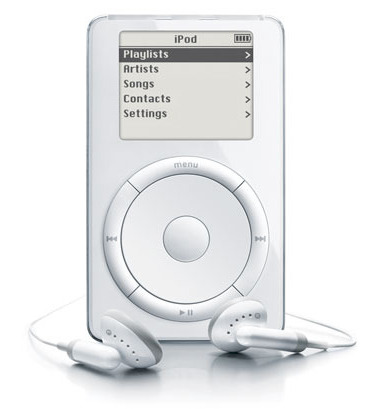
Original iPod
Today, Apple has vast ecosystems that are far more important than the MP3-playing iPod and Mac software titles available in 2001. iOS is critically important to the enterprise globally in ways Android will never be. Consumer interest in data security and privacy has never been higher, and Apple has never had a stronger case to make compared to the data grabbing surveillance advertising of Android as a platform, and particularly as a government surveillance platform built by various licensees who aren't going to resist when the state demands backdoor access.
Apple has never before had such strongly interlocking ecosystems like HealthKit and Apple Watch, HomeKit and HomePod, iTunes and Apple TV, Apple Music and CarPlay, Continuity and Macs, and this year: AppKit iOS software that will become portable to macOS. There are tremendous reasons why consumers and businesses will pay a premium for Apple's products in 2019 regardless of whether the overall economy is growing or not, far greater than there was in 2001.
Less than a decade later, the U.S. was hit by another recession that grew global by 2009. During the economic expansion between those two recessions, Apple had cranked out a series of iPods and incrementally advanced Macs. But internally, it had been working on the next generation of mobility: a wireless tablet capable of running a touch-driven Safari web browser.
Rather than releasing this new concept to a growing economy, Apple refined its product into a smartphone design that could be subsidized by mobile operators and formed global partnerships with carriers starting with Cingular / AT&T in the U.S. It ultimately launched iPhone just as the financial and subprime mortgage crisis erupted in 2007. The entire world staggered into a global recession in 2009.
During this period, notable Apple analysts kept talking about how the company was going to be hit by "global macroeconomic factors," and many began recommending that Apple needed cheaper products that economically battered individuals and businesses could afford. They were wrong. Apple continued building advanced iPhones at the same or advancing price points, to wild success.
Apple also launched increasingly fancy Macs during the peak of the Great Recession, including the all-new, very expensive 2008 MacBook Air with an advanced unibody aluminum design that was quickly incorporated across its MacBook Pro line as well.
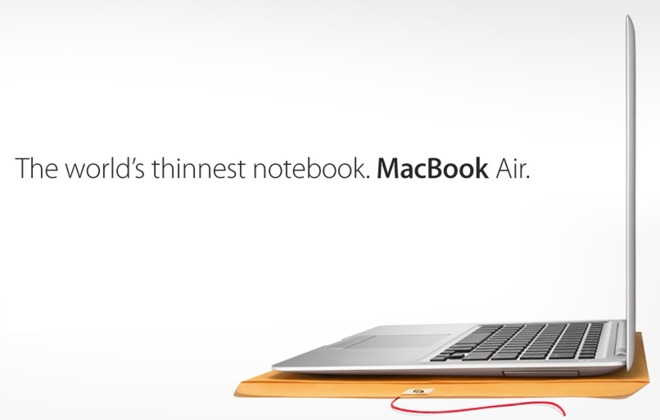
MacBook Air
To analysts, Apple was doing all the wrong things. It was nearly unanimous for analysts to insist that Apple desperately needed to join Acer, Asus and other failed PC makers in building cheap netbooks, the low-end portable mini-laptops that were cheapened down into a miserable but broadly affordable experience.
Analysts wouldn't stop talking about about this through most of the Great Recession, and tech industry columnists kept giving them airtime to blow out their hot air about how wrong Apple was to be investing in high-end Macs when the PC market was getting eaten up by huge shipments of netbooks. They were wrong.
Just as that recession began to heal, Apple released a followup to iPhone, taking full advantage of the three years of iOS platform development it had built around its new phone to deliver iPad. Rather than being patterned after a $330 Acer Netbook saddled with a sluggish Intel Atom processor running Linux —or optionally "upgraded" to Windows XP Home —Apple created iPad as a tablet-sized iPhone with the same snappy quick interface and no exposure to the problems of web Java, Flash, or other malware.
The entire world of netbooks collapsed. PC makers scrambled to copy iPad using Android or Windows RT or anything that might deliver a similar experience of simplicity, long battery life, and ease of use. Every one of these companies failed to build a successful tablet business, but market researchers and analysts desperately worked to cover this up by drawing attention to how many tablet devices were being shipped.
Intel lost billions of dollars trying to pay tablet makers to use its chips. Google derailed the development of Android phones for over a year in a failed stab to deliver Android 3.0 Honeycomb tablets. It kept trying to deliver Android tablets of its own for the next decade, attempting PC-like slates with Motorola, then trying the ultra-cheap Nexus 7 with Asus, then just ripping off Apple's iPad mini verbatim with the Nexus 9 clone job with HTC. Google, and Android, failed miserably.
Reading the work of tech writers from the last decade, you'd only get the impression that it was Apple that was failing with its iPads, due to its "losses" in market share to the loss-leader shipments dumped by PC failures, and then the collapse of sales that occurred when Apple transferred the value of larger iOS screens from iPad to new, larger iPhones. Yet today, Apple still has a roughly $20 billion tablet business and everyone else has nothing to speak of in the market between phones and PCs.

How will Apple's affordable luxury survive a global recession?
The modern history of Apple has weathered two previous recessions: one in the early 2000s following the Dotcom Bust, and then the Great Recession of the late 2000s that hit after the 2007 Financial Crisis. Note that both of these happened to coincide with the emergence of major new products that fundamentally changed Apple's core: first iPod and then iPhone.
Apple's 2001 Dotcom survival
In 2001, Apple was just beginning to recover from its 1990s near-death experience thanks to a series of decisive moves by Steve Jobs —including the slashing of unproductive research and the simplification of the company's product strategy. Yet as Apple rebuilt itself with solid new hits like the consumer iMac and workhorse PowerMac G4, it also launched its first notable mistake in the expensive, high-end, form-over-function PowerMac G4 Cube in 2000.
The G4 Cube was beautiful and featured some impressive concepts, but was beset by poor timing. It had been premium-priced to cater to the lavish-spending Dotcom market that began to implode just as the new machine became available. It only lasted one year as a commercial product. It now sits in various museums including New York's Museum of Modern Art, and in a few AppleInsider staffers' collections

The PowerMac G4 Cube
It's tempting to suggest that Apple's current lineup of high-end iPhones, MacBook Pros and other premium hardware sit in a similarly precarious position as the economy begins to look uncertain globally—particularly in China, where big-ticket spending has scaled back dramatically. There's an incessant media narrative continuously backed by populist head nodding that claims Apple's prices are just so high now that nobody can afford to buy them, along the lines of the quote attributed to Yogi Berra that "nobody goes there anymore. It's too crowded."
Pundits, columnists, and even many analysts keep talking about Apple's premium pricing as a problem, and seem to think they have discovered pure gold in arriving at the conclusion that rivals are offering competitive hardware at—get this—cheaper prices than Apple. The reality is that neither of those things is new for Apple at all.
In reality, the G4 Cube wasn't abruptly discontinued because the public suddenly realized that HP, Dell, and various generic PC makers were selling computers for less. It was largely that the new Cube was trying too hard to be museum-worthy and simply wasn't very good at being a powerful Mac, or as a plug and play consumer hit like iMac, and wasn't really doing anything usefully new.
The pricing of the fancy G4 Cube certainly didn't help its overall popularity, but a larger problem was its rather impractical desktop form factor just as mobility was growing increasingly important.
Apple continued to cope with the Dotcom Bust and economic recession while selling other premium-priced PowerMacs. It also introduced the fancy new Titanium PowerBook G4, a machine that was just as much of a premium-priced showboat as the G4 Cube at a time when tons of cheap PC notebooks were available elsewhere.

Titanium PowerBook G4
And most notably, in 2001 as recession afflicted Apple's primary markets in the U.S., Japan, and Europe, the company introduced iPod, a music player that was far, far more expensive than competing CD, MiniDisc, Flash memory or other hard drive MP3 devices. Yet iPod's premium price did not hold Apple back from clawing its way upward during a serious economic downturn.
Ultimately, the iPod ended up helping the company to completely reinvent itself as a device maker, as well as a global retailer—because iPods drove the creation and expansion of its new stores.
Jobs' recovering Apple of 2001 could demand premium pricing on its technology products that did rather non-novel things and yet dramatically grew during a recession despite limited corporate resources and a near 100 percent dependence on Mac hardware sales. At the same time, Microsoft exercised near total control over the global PC industry. So, why are pundits today patting themselves on the back for pointing out that the Apple of 2019 is charging more for its iOS mobile devices than Android cloners in China? Are they really that impenetrably ignorant?

Original iPod
Today, Apple has vast ecosystems that are far more important than the MP3-playing iPod and Mac software titles available in 2001. iOS is critically important to the enterprise globally in ways Android will never be. Consumer interest in data security and privacy has never been higher, and Apple has never had a stronger case to make compared to the data grabbing surveillance advertising of Android as a platform, and particularly as a government surveillance platform built by various licensees who aren't going to resist when the state demands backdoor access.
Apple has never before had such strongly interlocking ecosystems like HealthKit and Apple Watch, HomeKit and HomePod, iTunes and Apple TV, Apple Music and CarPlay, Continuity and Macs, and this year: AppKit iOS software that will become portable to macOS. There are tremendous reasons why consumers and businesses will pay a premium for Apple's products in 2019 regardless of whether the overall economy is growing or not, far greater than there was in 2001.
Apple's 2007 Great Recession survival
Less than a decade later, the U.S. was hit by another recession that grew global by 2009. During the economic expansion between those two recessions, Apple had cranked out a series of iPods and incrementally advanced Macs. But internally, it had been working on the next generation of mobility: a wireless tablet capable of running a touch-driven Safari web browser.
Rather than releasing this new concept to a growing economy, Apple refined its product into a smartphone design that could be subsidized by mobile operators and formed global partnerships with carriers starting with Cingular / AT&T in the U.S. It ultimately launched iPhone just as the financial and subprime mortgage crisis erupted in 2007. The entire world staggered into a global recession in 2009.
During this period, notable Apple analysts kept talking about how the company was going to be hit by "global macroeconomic factors," and many began recommending that Apple needed cheaper products that economically battered individuals and businesses could afford. They were wrong. Apple continued building advanced iPhones at the same or advancing price points, to wild success.
Apple also launched increasingly fancy Macs during the peak of the Great Recession, including the all-new, very expensive 2008 MacBook Air with an advanced unibody aluminum design that was quickly incorporated across its MacBook Pro line as well.

MacBook Air
To analysts, Apple was doing all the wrong things. It was nearly unanimous for analysts to insist that Apple desperately needed to join Acer, Asus and other failed PC makers in building cheap netbooks, the low-end portable mini-laptops that were cheapened down into a miserable but broadly affordable experience.
Analysts wouldn't stop talking about about this through most of the Great Recession, and tech industry columnists kept giving them airtime to blow out their hot air about how wrong Apple was to be investing in high-end Macs when the PC market was getting eaten up by huge shipments of netbooks. They were wrong.
Just as that recession began to heal, Apple released a followup to iPhone, taking full advantage of the three years of iOS platform development it had built around its new phone to deliver iPad. Rather than being patterned after a $330 Acer Netbook saddled with a sluggish Intel Atom processor running Linux —or optionally "upgraded" to Windows XP Home —Apple created iPad as a tablet-sized iPhone with the same snappy quick interface and no exposure to the problems of web Java, Flash, or other malware.
The entire world of netbooks collapsed. PC makers scrambled to copy iPad using Android or Windows RT or anything that might deliver a similar experience of simplicity, long battery life, and ease of use. Every one of these companies failed to build a successful tablet business, but market researchers and analysts desperately worked to cover this up by drawing attention to how many tablet devices were being shipped.
Intel lost billions of dollars trying to pay tablet makers to use its chips. Google derailed the development of Android phones for over a year in a failed stab to deliver Android 3.0 Honeycomb tablets. It kept trying to deliver Android tablets of its own for the next decade, attempting PC-like slates with Motorola, then trying the ultra-cheap Nexus 7 with Asus, then just ripping off Apple's iPad mini verbatim with the Nexus 9 clone job with HTC. Google, and Android, failed miserably.
Reading the work of tech writers from the last decade, you'd only get the impression that it was Apple that was failing with its iPads, due to its "losses" in market share to the loss-leader shipments dumped by PC failures, and then the collapse of sales that occurred when Apple transferred the value of larger iOS screens from iPad to new, larger iPhones. Yet today, Apple still has a roughly $20 billion tablet business and everyone else has nothing to speak of in the market between phones and PCs.


Aucun commentaire: